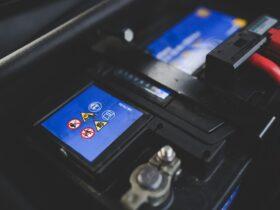By Mike Hanlon
It’s one of the most important products of recent times, and it went on sale outside China for the first time this week. The Felo M1 is a folding motorcycle that almost perfectly mimics the capabilities of Honda’s 1980s two-stroke Motocompo, without the petrol and oil smell … and it has a big battery and a power outlet that opens up myriad new possibilities as a portable power bank.
Though Chinese EV Company Felo had shown the product in China, when the Japanese distributor announced sales last month, the Felo M1 was carrying a price tag of JPY 380,000 (around US$2,800).
When the M1 was introduced to the massive Thai marketplace this week at the 45th Bangkok International Motor Show, the price tag was THB 59,000 which converts to US$1,610 at today’s exchange rates.
At $1,600, the M1 becomes a compelling proposition as a last-mile trunk bike, and a portable power source capable of running your house, but it’s big selling point should be that it does all of that while being a viable real-world short-distance motorcycle.
Now I did not get to ride the M1 but it seemed to have all the attributes required for a relatively comfortable 20-minute journey on public back streets – and it has the speed to put a lot of territory behind it in 20 minutes. Bike paths would be the ideal environment for something of this speed, but there are many different local laws on power levels for bike path users.
The wheelbase is long enough to give you 45 km/h (28 mph) stability and the motor should be enough for an inner urban environment. Main roads would probably be unsafe on this bike simply because of the speed differential with the traffic. The M1 will happily perform small commutes reliably and it should be very cost-efficient to buy and run.
Of particular contrast to a fully functioning fold-down electric motorcycle on the Smartech (the Thai distributor for Felo) stand was the Honda stand that was less than 100 meters away, offering showgoers test rides on the new Motocompacto.
The 18.7-kg (41-lb) Motocompacto takes up only slightly less space than the M1 and with 490 watts, it is not too far behind the M1’s 700 watts, so on paper, it looks comparable to the M1. In reality, it isn’t!
The Motocompacto was being ably demonstrated by a male model in light grey slacks, white canvas sneakers and matching fluorescent white jacket. This might be suitable clothing for the Office Grand Prix, but in a city covering 1,570 square kilometers (600 square miles) with a big smog problem and footpaths that resemble obstacle courses, those clothes would be trashed inside 10 km.
Anyway, that really has little to do with the Motocompacto because everyone knows that when you are riding a motorcycle, you pick up road grime. The white canvas sneakers and white jacket were just a tad too implausible, incongruent and disingenuous for my taste.
It’s not a lack of grunt or power that will let the Motocompacto down, but a lack of suspension, tires and brakes.
Going 24 km/h (15 mph) without suspension on hard tires is not a pleasant experience. It is not something you would ever choose to do again once you’ve done it. Doing it without suitable brakes and tires, and having such a small front wheel that might literally pitch you over the bars if it fell in a not-very-big hole. No thanks. The top speed of 24 km/h might be achievable, but it wouldn’t be safe at that speed IMHO.
Indoors in the massive Bangkok Challenger Impact exhibition center, with floors as smooth as a billiard table, the Motocompacto’s biggest weakness was not evident. In the real world, this sucker will shake your fillings loose.
Which brings us back to the Motocompo – the predecessor of the Motocompacto.
It is the reference point for this marketplace as it was the first modern-day fold-up trunk-bike for the Honda City commuter car in the early 1980s. The Motocompo was a vastly different beast to the Felo M1 – for starters it ran a two-stroke motor so Honda could reduce the weight sufficiently to meet its design targets.https://www.youtube.com/embed/_0uylG-tYfo?enablejsapi=1
The above Motocompo sold recently at Iconic Motorbikes for $4,173. We’ve included the video because most people don’t seem to realize the Motocompo was a two-stroke, and when you get past the shiny colorful exterior and realize it’s a two-stroke, a large part of the mystique drops away.
As much as I love two-strokes in racing bikes, the two-stroke motor is not the correct choice for a transportation appliance and it would have pained Honda founder Soichiro Honda considerably to have such a prominent product using a two-stroke motor.
Viewed in that light, Honda’s decision to cease production of the iconic Motocompo trunk-bike in 1983 is understandable. In three years it sold 55,000 units, which is not an insignificant amount, just not what Honda was hoping for with an innovative product.
The complete absence of any replacement during the ensuing 40 years is mystifying.
As a regular attendee at the Tokyo Motor Show during that time frame, I witnessed more than a dozen prototypes that Honda had designed and built for motor shows, it’s just that none of them ever got past the concept stage.
That’s the Honda Unibox concept, which had the capacity to carry fold-up motorcycles in its doors. There was provision for two different types of fold-up electric bikes, but the Caixa Concept in particular folded down into a very compact unit.
The regular appearance of Honda electric fold-up motorcycles at the Tokyo Show has always led us to believe there was a Honda-like solution coming for this market need, but the Motorcompacto was a disappointment. My vote for the most plausible of the prototypes was the Motorcompo below.
Now we could go on about the lack of an electric fold-up motorcycle from Honda, but the other Japanese manufacturers have also shown a number of fold-up concept EVs in that time too. If these old Japanese concepts are of interest to you, might we suggest you take a look at this article: Dual-mode transport – the trend accelerates. The article contains over 180 images of concepts and previous attempts to produce fold-up personal transportation. It was written 12 years ago
We don’t know why we haven’t seen a commercial fold-up EV from Japan yet, but it really doesn’t matter any more because we expect the M1 will fill that niche rather nicely with such a modest entry price, and it may turn out to be the product that puts Felo on the global map. Rest assured, Felo looks competent, technology-driven and fiercely competitive, and it’s hard to see Japan coming up with a competitive product with a $1,600 price point.
Anyway, I haven’t had an opportunity to ride one, but after 50 years of doing it professionally, I am confident it works as advertised.
The M1 has both front and rear suspension and semi-balloon tires that add further comfort on the inevitable rough surfaces one will encounter on-road, off-road and even on-footpath in most of the world’s countries. That front disc brake is reassuring too.
Why the Felo M1 is important
Civilization is about to achieve yet another important tipping point – where more than 50% of the world’s population lives in apartments. Europe as a whole will pass that point within two years. Spain and Germany already house more than two-thirds of their inhabitants in apartments, and as a cost- and space-effective way of living, there’s an inevitability about what the average home of the future is going to look like everywhere on the planet.
Apartment living IS humanity’s future.
The ability to be able to house a mobility device in your apartment can be reasonably expected to become an important buying criteria a decade or two from now.
Felo now has the first mover advantage.
Link: https://newatlas.com/urban-transport/felo-m1-folding-electric-motorcycle-portable-powerbank/?utm_source=pocket_saves
Source: https://newatlas.com
















Leave a Reply